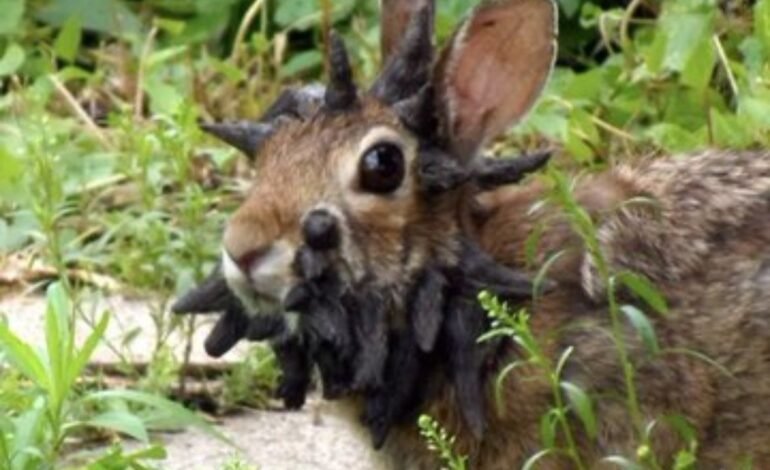Photo taken from: X
Residents of Fort Collins have reported the appearance of wild rabbits with strange black, tentacle-like or horn-like protrusions around their faces, sparking outrage on social media and in local media.
What caused such a peculiar appearance?
Experts from Colorado Parks and Wildlife confirmed that these deformities are caused by the cottontail rabbit papillomavirus (also known as Shope papillomavirus), a relative of the human papillomavirus. This virus causes keratotic tumors—black, hard, enlarged wart-like growths—on the skin of rabbits, especially on the head and neck.
Transmission occurs mainly through insect bites such as fleas, ticks, or mosquitoes, and is more common in warmer months.
Do they pose a risk?
Authorities reassure the public: this virus is specific to rabbits and poses no danger to humans or other pets. Most infected rabbits recover over time. However, if tumors affect vital functions such as eating or seeing, the risk for the animal increases and could even lead to cancer in domestic rabbits.
What to do if you see one?
- Don't approach or try to touch them; they are still wild animals.
- Prevent domestic pets from interacting with them.
- If a pet rabbit shows similar symptoms, consult a veterinarian.
A myth with a real basis
This strange phenomenon may have inspired the legend of the jackalope, a mythical hare-like animal with horns, part of North American folklore. The Shope papillomavirus was first identified in the 1930s, and it was discovered that certain viruses can induce tumors, as with the human papillomavirus.
For more stories like this, follow More Latin.
Sources:

